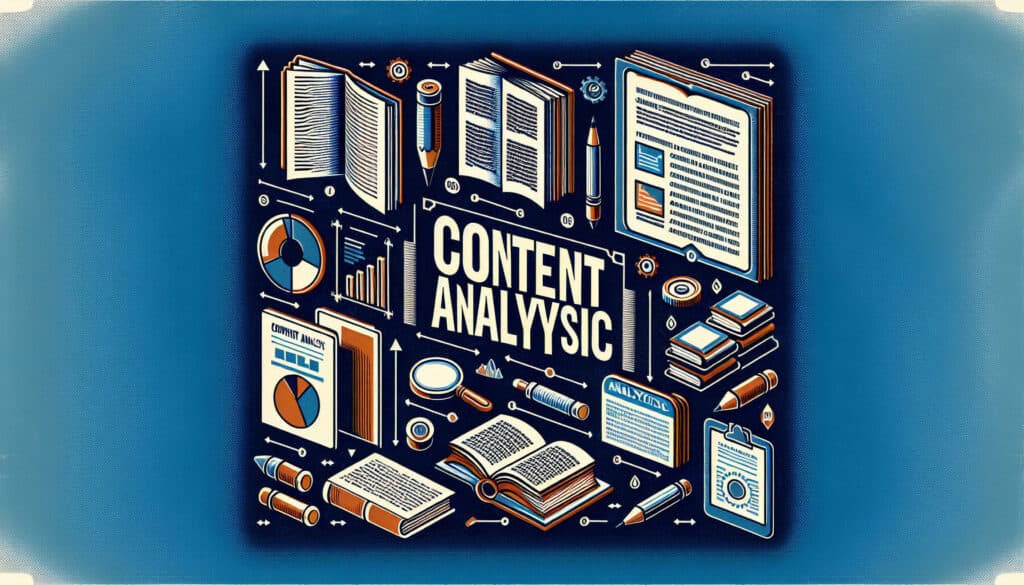A research technique used to make replicable and valid inferences by interpreting and coding textual material.
- 方法: 客户与营销, 构思, 产品设计
Content Analysis

- 方差分析, 环境比较分析, 研究与开发, 统计分析, 统计过程控制 (SPC)
Content Analysis
- 方差分析, 环境比较分析, 研究与开发, 统计分析, 统计过程控制 (SPC)
目标
如何使用
- Researchers systematically categorize and analyze text, images, or other media to identify patterns, themes, and meanings. It can be quantitative (counting words) or qualitative (interpreting themes).
优点
- Provides a systematic and objective way to analyze qualitative data, can handle large volumes of textual data, and can be used to uncover trends and patterns in communication.
缺点
- Can be very time-consuming, the development of coding schemes can be subjective, and it can overlook the context or nuances of the communication.
类别
- 客户与营销, 解决问题
最适合:
- Systematically analyzing textual or visual content to identify and quantify patterns and themes.
Content Analysis serves a wide array of applications across various sectors, including marketing, media studies, social sciences, and user experience research in product design. In industries such as technology development or consumer goods, this methodology can be pivotal during the exploratory phase of product development, where gathering user feedback from surveys, social media, forums, and customer reviews provides valuable insights into user needs and preferences. Analysts or design researchers typically initiate this process, often supported by cross-functional teams such as marketing strategists and data scientists who contribute to gathering and interpreting data. For instance, a company launching a new electronic device may analyze customer reviews and online discussions to identify recurring themes about functionality, user experience, or common issues faced by users. This approach can reveal not only prevalent sentiments but also specific areas for enhancement that can drive design iterations. The adaptability of Content Analysis allows it to evolve, combining quantitative elements—such as frequency counts of certain keywords or phrases—with qualitative interpretations that provide depth to understanding user sentiments. Furthermore, its capability to process large data sets makes it particularly useful for organizations that aim to track shifts in consumer behavior or trends over time, thereby informing strategic decisions and driving innovation throughout the 产品生命周期.
该方法的关键步骤
- Define the research questions or objectives guiding the analysis.
- Select the content type for analysis, such as text, images, or audio-visual media.
- Develop a coding scheme based on predefined categories or open coding.
- Code the content systematically, applying the coding scheme to each piece of data.
- Utilize software tools, if applicable, for data management and analysis of coded content.
- Analyze the coded data to identify trends, patterns, and themes.
- Interpret the findings based on the identified themes and patterns within the context of the research objectives.
专业提示
- Utilize software tools for automated coding and analysis to efficiently handle large data sets, minimizing human error and bias.
- Incorporate mixed methods by integrating quantitative metrics with qualitative interpretations to enrich your findings and validation.
- Continuously refine your coding scheme through iterative analysis, allowing for the emergence of new themes as your understanding of the data evolves.
历史背景
1828
1850
1854
1854
1911
1928
1950
1827
1848
1850
1854
1895
1914
1943
1970
(如果日期不详或不相关,例如 "流体力学",则对其显著出现的时间作了四舍五入的估计)。















相关文章
肌肉骨骼不适调查表
多变量测试(MVT)
多元回归分析
动作捕捉系统
MoSCoW 方法
情绪中值测试